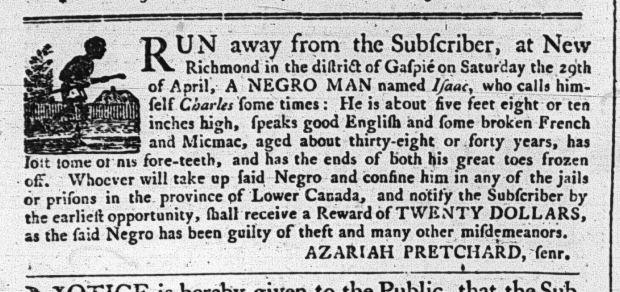
The gruesome slave trade is mostly associated with the tropical areas, like Southern USA and the Carribean Islands, but it also happened in significantly colder Canada. We do not have much knowledge on how this colder climate affected the slave's life, culture and resistance, but one of few sources is fugitive slave advertisements. Found throughout the Transatlantic World, fugitive slave advertisements demonstrate the ubiquity of African resistance to slavery. Abundant with details like the names, speech, accents, language, mannerisms, and skills of the fugitives, in Quebec, such notices also frequently recounted the nature of cold-weather dress, the peril of winter escapes, and the damage done to the bodies of the enslaved from exposure to the cold.
While running away was a year-round tactic of slave resistance in tropical regions, in Canada, it was unquestionably seasonal with summer and fall escapes dominating. Therefore, Canadian fugitive slave notices for winter escapes demand that we consider the extraordinarily perilous circumstances in which enslaved people sought their freedom

Charmaine A. Nelson is a Professor of Art History at McGill University in Montreal, Canada. Her research and teaching interests include postcolonial and black feminist scholarship, Transatlantic Slavery Studies and Black Diaspora Studies. She has made ground-breaking contributions to the fields of the Visual Culture of Slavery, Race and Representation, and Black Canadian Studies. She will do this talk in English.
